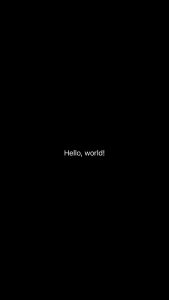What did you personally accomplish this week on the project? Give files or
photos that demonstrate your progress. Prove to the reader that you put sufficient effort into the project over the course of the week (12+ hours).
This past week, I worked during class on Monday to unpack the amazon package that arrived of the goose neck phone holder tripod desk stand mechanism with the ring light. We found that the ring light made insignificant changes to the lighting of the surface but the lighting in Ansys Techspark was something that couldn’t be completely representative of all lighting conditions.
But it worked great, and could be lifted high enough to take a photo of a bird’s eye surface down below that it could show the entirety of the four octaves. This is good since the entire image captured can simply display all the octaves and we don’t have to do extra work to accomodate for a selection of octaves while the user is playing, rather we can do all of them at once.
I created a printout of what I wanted the design of the piano keyboard printout should look like going through multiple iterations. I wanted to make sure that the corners had a distinct enough visual to do feature matching so that i could find its coordinates and then do a warp perspective to get the four corners of the piano from the overhead camera view. This proved tricky but first the piano layout can’t fit on an 8.5 x 11 sheet of paper, so I had to print out two and then meticulously tape them together to combine a total of four octaves on the keyboard layout.
Feature matching proved to not be accurate enough, so I decided to experiment with doing red border contour identification using the cv.findcontours function. This took some time to figure out in application, but I was able to get the moments of the contours to identify the centroid areas of the thresholded objects found in the image, which was the 4 corners. This center points of these centroids was good enough to get the 4 corners to then do a warp perspective function. Since it wasn’t a close bounding border to the piano and there still some extra slack since it was only the center of the centroid, not the other ones, I ended up just cropping the post warped image and then adding the gray border that I used in the segmentation algorithm from last week.
I tried this out on test images from online and this has worked to a good degree so far but it requires some additional polishing. My hope is that there shouldn’t be too many issues doing this with real photos in person.
” Is your progress on schedule or behind? If you are behind, what actions will be taken to catch up to the project schedule?
My progress is behind schedule, as I did not take into account warp perspective into my schedule. I could just take the easier route if necessary to make sure demoes go smoother by having the user select the points themselves in the interface, removing most potential for error. I also need to rearrange the order of the segmentation to map to the order of the actual keynotes including sharps (i.e. C key and C# key). Lastly, for the interim demo, they want me to show they can threshold the entire hand on the image which shouldnt be too difficult since I’m not focusing on specific fingers for right now.
” What deliverables do you hope to complete in the next week?
By next Wednesday for the interim demo I hope to have the following above completed. As a recap this is polishing up the warp perspective, ordering the segmentation keys, thresholding an entire hand on the image, then lastly having this work on real life photos taken from the top down view phone holder.

